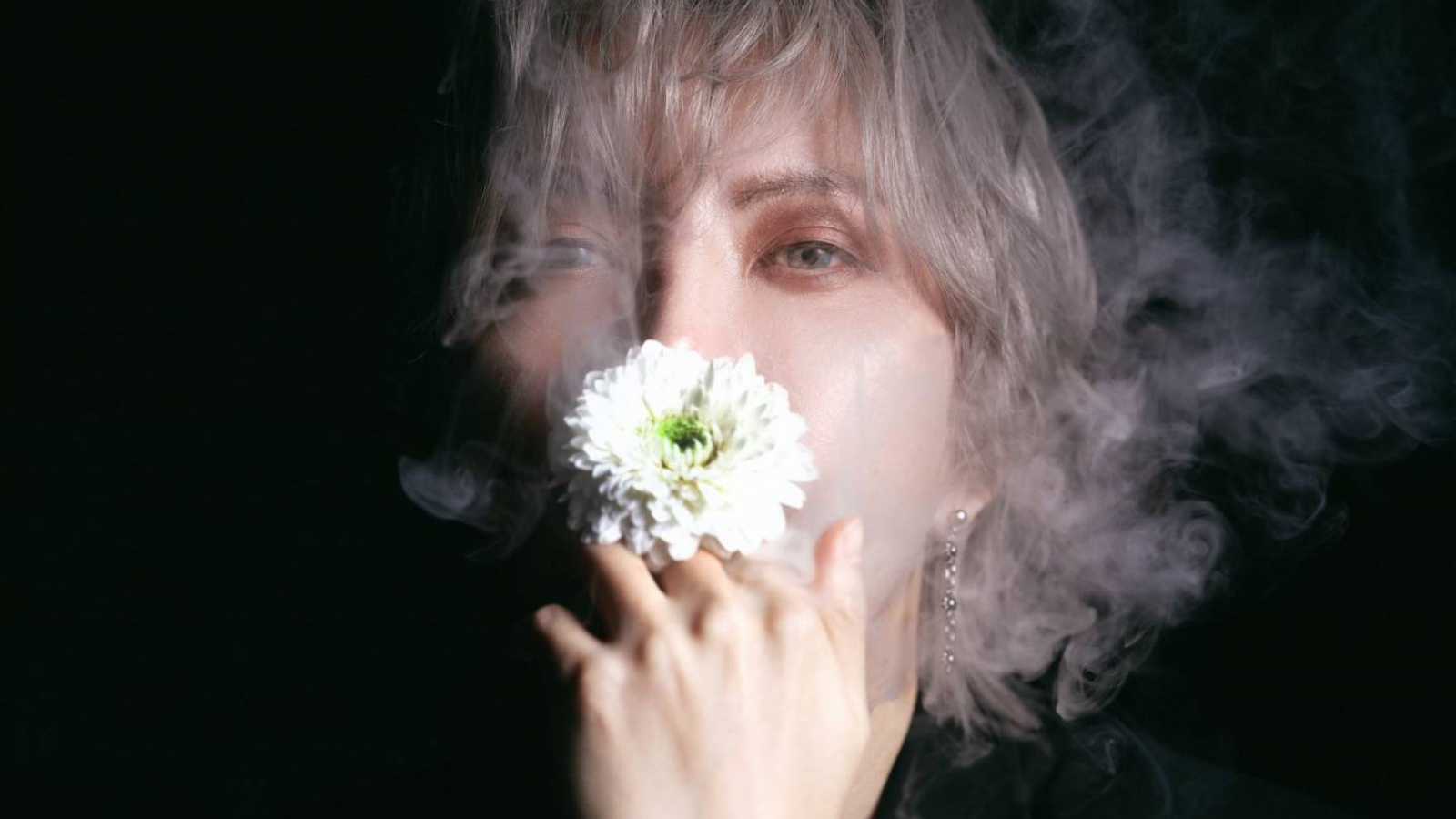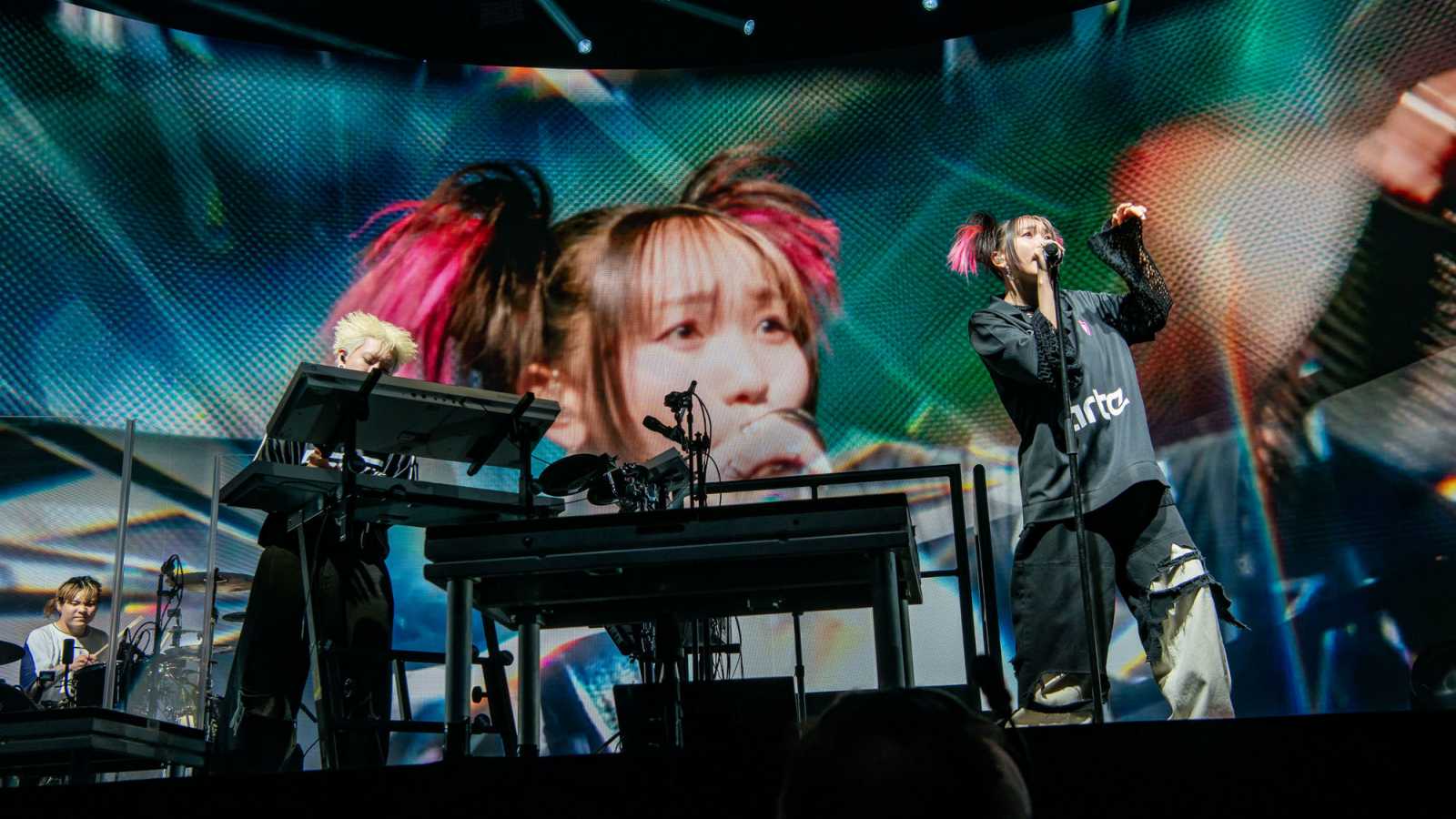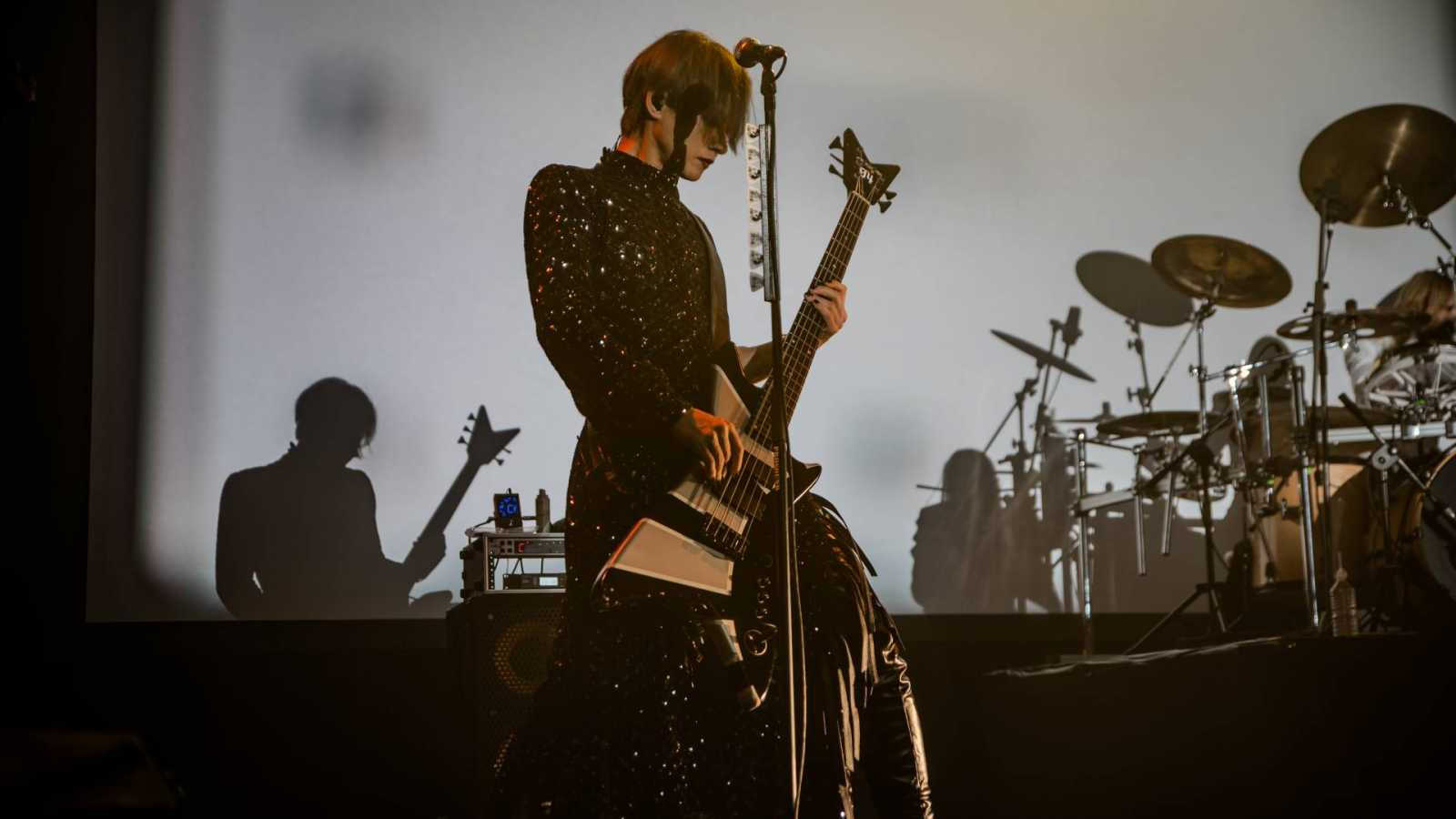D may be best known for playing heavy rock and metal, but they have also tried their hand at folklore from a variety of different cultures. Ouka saki some ni keri captivates with traditional Japanese instruments, the rhythms of Canon del Colca are borrowed from Andean music and Hanatsumi no otome ~Rozova Dolina~ was inspired by the rose valley in Bulgaria. Desert Warrior conjures up visions of the Middle East, Yoru no me to ginyushijin and 13gatsu no yumemi oka resurrect the European Middle Ages and Colosseo the warlike spirit of ancient Rome. For their new mini-album they have chosen a destination closer to home.
Huang di ~Yami ni umareta mukui~ is a concept album set in China and the US that tells the complex love story of Heilong, the “Black Dragon", and his fiancé, the daughter of a triad boss. Over the years, many different artists have been inspired by China, such as David Bowie with China Girl and Siouxsie and the Banshees with Hong Kong Garden. Can D add a new spark to this popular theme? And how did they go about infusing their darkly romantic rock sound with a Chinese flavour?
The title track, Huang di ~Yami ni umareta mukui~, opens with a gong that fades into a graceful melody played on traditional Chinese instruments. Unfortunately, the CD booklet doesn't specify their names, but they appear to be dizi, a bamboo flute, and guzheng, a type of zither. The contemplative atmosphere is short lived, however, because soon Ruiza's and HIDE-ZOU's heavy guitars and Tsunehito's bone crunching bass cut in. Following a brief interlude of bass and drums, flute and zither return and, together with erhu, a two stringed violin, blend seamlessly into D's powerful modern rock sound. Like in their previous release, Torikago goten ~L'Oiseau bleu~, the guitar solo is played by HIDE-ZOU, but in the second half of the song Ruiza, too, has the opportunity to show off his skill. Finally, somewhere in the background lurk the warm sound of a 12-stringed acoustic guitar and a South American cajón drum. Overall, the band has created a piece of epic folk rock, in which delicate Chinese instruments, brutal guitar riffs and ASAGI's luxurious voice blend together in perfect harmony.
Those who find all this too exotic will appreciate Makutsuenshuuki, a straight forward rock tune without a single foreign instrument. By D's standards the song is almost too simple and, aside from the fast pace and a few very high notes in the chorus, doesn't offer any stand-out features. Nevertheless, or perhaps because of this, it reflects the angry lyrics well and during the chorus one can almost see the hands of the fans dance through the air.
Honoo no kairou is the first ballad of the album and, in keeping with its masculine character, that means a power ballad. It begins with the sound of bells, which are joined by erhu and ASAGI's clear vocals. Here and there the guitars lend additional weight to the sweet melody and, of course, the song wouldn't be complete without a guitar solo. It ends on a surprisingly quiet, but all the more moving note with a monologue that is whispered over the music in a deep, emotionally charged voice.
The next track packs a harder punch. Like Makutsuenshuuki, Gikyousouden is a no-frills rock tune, but with a much livelier rhythm. HIROKI must have muscles of steel as his galloping drums constantly race along with Ruiza's and HIDE-ZOU's powerful guitars. The star of the song, however, is ASAGI, who is in top form and demonstrates a variety of different vocal styles, from angelic tremolos to occasional death growls.
There's no time to catch your breath because with Ryuugan no shizoku now follows the heaviest song of the album. From the beginning, screaming guitars and pounding bass set the pace. D has developed the background shouts that are so popular among J-rock bands to a chant that sounds almost tribal and use it here to support their head banging-inducing metal riffs. ASAGI cuts in with his clear voice, but then switches to deep rhythmic death growls, which are once again underlined by heavy riffing and background shouts. Clear vocals and death growls alternate until they merge into a melodic chorus, during which ASAGI hits an impressively high falsetto. After a brief guitar solo metal riffs and death growls return, once again followed by a melodic chorus, until the song ends with a final assault of guitars and bass.
After this headbanging fest the mood turns once again traditional and emotional. Sansuishi, which was inspired by landscape art, opens with chords of acoustic guitar and zither, which are joined by bamboo flute and erhu. The arrangement sounds so authentic that one indeed feels transplanted into an idyllic Far Eastern landscape. After ASAGI gently introduces the chorus, electric guitars and heavy bass set in and elevate the bitter-sweet melody to a rousing power ballad. The emphasis here is on “power”: despite the playful Chinese instruments which, like in the title track, harmonise throughout the song with D's western sound, Sansuishi is unabashedly bombastic and would make a great theme song for a historical melodrama.
The final track on the regular B Type version of the mini album is the voiceless version of Huang di ~Yami ni umareta mukui~. The international edition instead features a selection of D classics that are meant to serve the band as a musical calling card at engagements abroad.
First up is the energetic Night-ship “D”, during which the fans perform a dance with red and black D flags. This is followed by the operatic Yami yori kurai doukoku no acappella to bara yori akai jounetsu no aria, whose dramatic scales allow ASAGI to show off the full range of his voice. Together with Night-ship “D”, this song is one of D's signature pieces. Dearest you is a lively, by D's standards surprisingly light-hearted tune that is designed to unite the fans both with the band and each other. At live concerts, the fans hold each other's hands and then jump together with the band. Finally, Sleeper is a nod to western music tastes. According to D, this song was requested more often than any other at their performances in Europe and the US. On one hand, that's not surprising since even in the visually very alternative visual kei scene classical rock is often more popular than avant garde. On the other hand, one would hope that a band as open to new influences as D would be equally appreciated for its more experimental compositions.
Summary: Huang di ~Yami ni umareta mukui~ is an impressive synthesis of traditional and modern. D haven't made things easy for themselves. Instead of relying on shortcuts like Asian riffs, they integrated a variety of traditional Chinese instruments into their contemporary rock sound in an intelligent and sensitive way. This approach isn't limited to the music alone. The lyrics contain references to Chinese literature and mythology, including quotes in Chinese language, and the elaborate costumes come in two different versions, a traditional version and a modern one, which lovingly recreate both historical Chinese dress as well as the contemporary gangster look. The artwork also shows great attention to detail, such as the font of the album title, which is based on a Chinese stone seal. According to ASAGI, Heilong's story isn't finished yet, so we can look forward to hearing more about him in the hopefully not too distant future. In the meantime, who knows to which faraway countries and cultures D will take us next?



